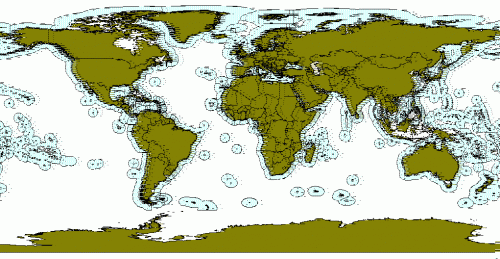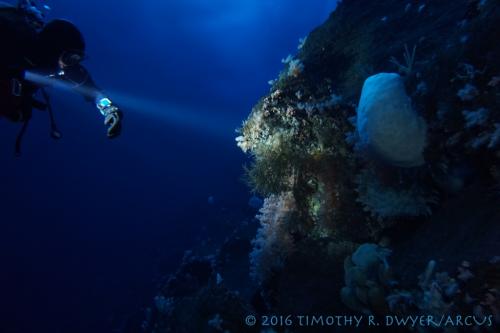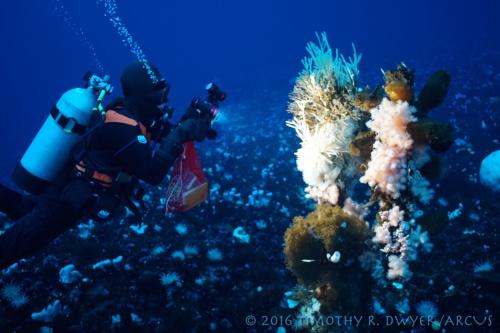 The Exclusive Economic Zones of every country with a coastline extend to a maximum of 200 nautical miles out to sea (http://www.keyword-suggestions.com/ZXhjbHVzaXZlIGVjb25vbWljIHpvbmUgbWFw/)
The Exclusive Economic Zones of every country with a coastline extend to a maximum of 200 nautical miles out to sea (http://www.keyword-suggestions.com/ZXhjbHVzaXZlIGVjb25vbWljIHpvbmUgbWFw/)
Finding common ground between 24 nations and the European Union in designating the Ross Sea Marine Protected Area (MPA) was no easy task, and the final compromise took five years to reach. For a single country, establishing MPAs inside territorial waters is a matter of passing internal legislation and/or regulation. The oceans beyond 200 nautical miles (230mi/368km) from any shoreline are controlled by no country and most of the rules and laws that might protect them have yet to be written. The expanse of Southern Ocean surrounding Antarctica is considered international waters because no country controls Antarctica, in total or in part. The compromise reached last week is a real triumph in international cooperation by virtue of its very existence. Much like the preservation of the continent was in 1959, this agreement is a groundbreaking step towards preserving ocean resources and services outside of territorial waters.
 Sea stars of the genus Odontaster feed on diatoms covering a sponge.
Sea stars of the genus Odontaster feed on diatoms covering a sponge.
The no-take MPA itself is significant because it lays out some of the highest protections possible for any area of the ocean. MPAs are typically established based upon scientific consensus on the particularly unique or important qualities of a given area. Some have been designated to protect the nursery grounds of commercially important animals. Others have been established as a means of preserving the diversity of species, habitats, or even genes found within them. Still others have been laid out with historical significance or even aesthetics and recreation in mind. Each of these types of MPAs provide varying degrees of protection for the organisms within them and for the ecosystem as a whole. Scientifically, MPAs work as a "control;" a baseline area against which to compare the impacts of permitted uses in nearby areas. When it takes effect in December 2017, 70 percent of the Ross Sea MPA will prohibit extraction of natural resources of any kind (a "no-take" preserve), while the remaining 30 percent will allow for very limited fishing for research purposes. This work will tell us a lot about the effects of fishing in unregulated areas of the Southern Ocean.
 Dr. Art Woods checks his dive computer, simultaneously illuminating a diverse ecological community living on the rocky bottom.
Dr. Art Woods checks his dive computer, simultaneously illuminating a diverse ecological community living on the rocky bottom.
Over the past four weeks, I've had the extraordinary privilege to explore a handful of locations in McMurdo Sound, one small corner of the Ross Sea. I've been even more fortunate to meet and work alongside the people who are answering some of the many, many questions about this little known yet massively important marine system. If my brief visits beneath the sea ice are representative of what this entire region has to offer, the aesthetic value of the Ross Sea is unequalled. And as a sentinel ecosystem in an altered global environment, the Ross Sea and those studying it will play a key part in helping us understand what to expect in the decades of change ahead of us.
 Dr. Amy Moran searches for sea spiders hiding among sponges, soft corals, and tunicates.
Dr. Amy Moran searches for sea spiders hiding among sponges, soft corals, and tunicates.

Comments